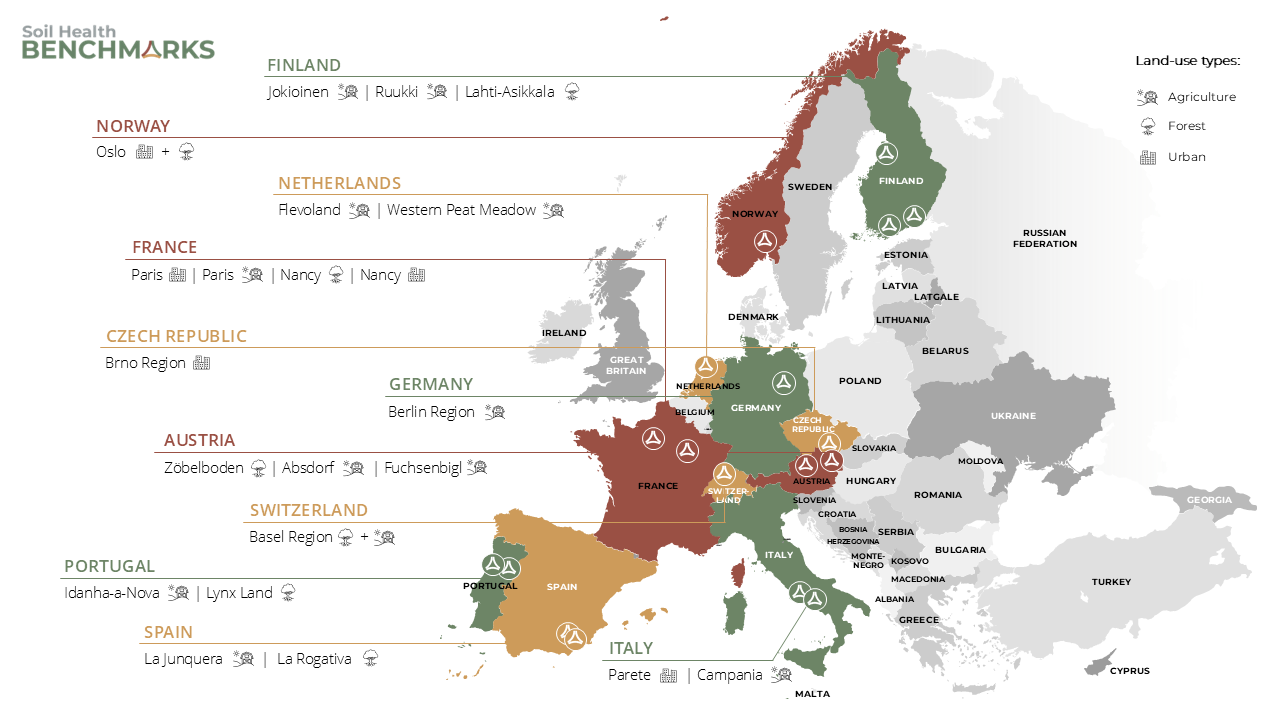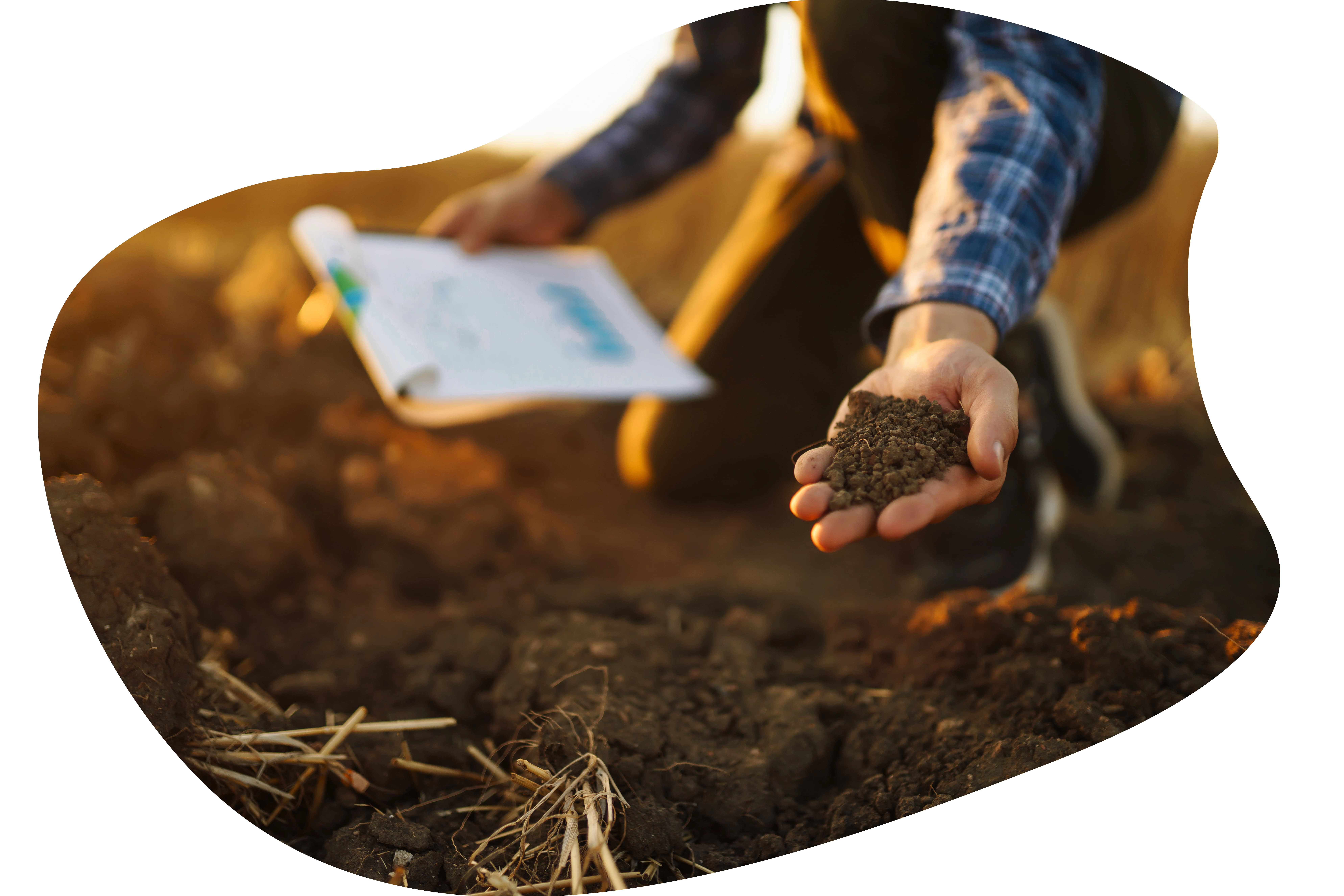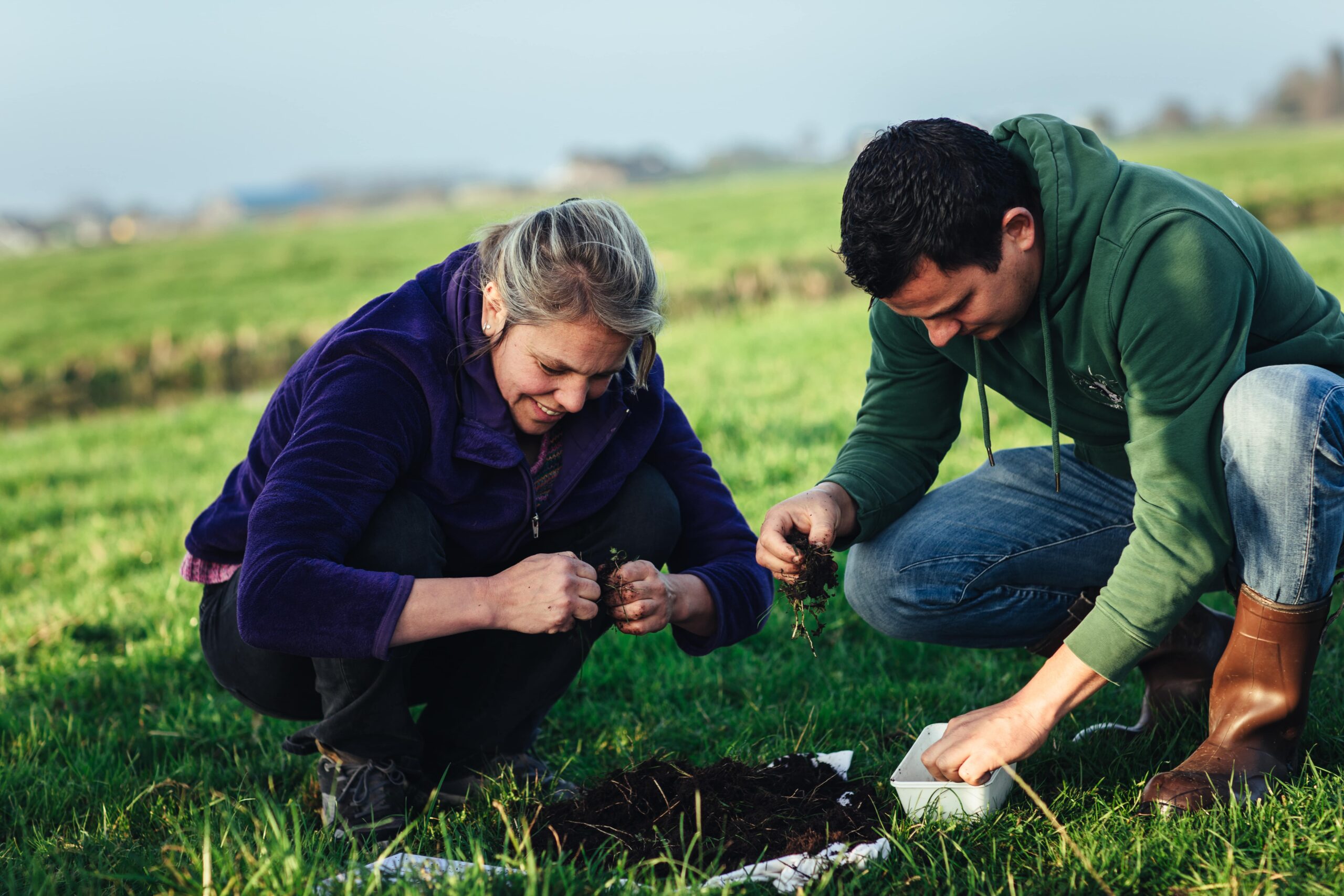Revolutionising how we monitor soil health
BENCHMARKS is a Horizon Europe project aimed at transforming how Europe monitors soil health. We’re building a transparent, harmonised and cost-effective soil health framework designed to work from local and national to EU scales. Co-developed with experts and local actors, it addresses the needs of land managers, policymakers, scientists and businesses to tackle soil health challenges.

Our Partners
36000
Soil samples taken
28 in 11 countries
Soil sampling sites
+650
Land managers engaged

Applying science to the real world
BENCHMARKS brings together local and expert data, co-developing the monitoring framework with stakeholders at 28 soil health monitoring sites in 11 European countries, spanning urban, agricultural and forestry landscapes. The results from testing and validating this framework will feed into BENCHMARKS’s key output: a user-friendly Soil Health Dashboard to support decision-making and sustainable land management.
Providing the science to help you measure soil health
At BENCHMARKS, we help actors and institutions across all scales —from cooperatives to ministries— develop robust, science-based soil health Monitoring, Reporting & Verification (MRV) systems tailored to their needs. Our offer? Practical tools, expert guidance, and co-creation that turns soil health from a concept into measurable, actionable outcomes.


Providing the science to help you measure soil health
At BENCHMARKS, we help actors and institutions across all scales —from cooperatives to ministries— develop robust, science-based soil health Monitoring, Reporting & Verification (MRV) systems tailored to their needs. Our offer? Practical tools, expert guidance, and co-creation that turns soil health from a concept into measurable, actionable outcomes.
‘A Soil Deal for Europe’
BENCHMARKS is a Horizon Europe project funded under the EU Mission A Soil Deal for Europe (Mission Soil), which leads the transition towards healthy soils by 2030.
The project will support Mission Soil by developing an integrated soil monitoring framework to track progress towards soil health across Europe. BENCHMARKS also promotes close collaboration with other Mission Soil projects, creating opportunities for ongoing networking and knowledge exchange.
Together with partner projects, BENCHMARKS co-initiated the Mission Soil Cluster, a collaborative initiative to strengthen interaction and communication between projects and stakeholders. You can stay up to date with news and events from the wider Mission Soil community via the Mission Soil Platform.


Our vision for soil health
Soil health means good chemical, biological and physical condition of soils—and their capacity to deliver vital ecosystem services. Maintaining it and restoring it demands transformative change across sectors, land uses and scales. Achieving the goal of all European soils to be healthy and resilient by 2050 requires a decisive shift where soil protection, sustainable use and restoration become the norm. BENCHMARKS supports this transition with robust, science-based monitoring and practical tools that contribute to climate neutrality, a clean circular economy and human health, while addressing biodiversity loss, desertification and land degradation.
Our vision for soil health
Soil health means good chemical, biological and physical condition of soils—and their capacity to deliver vital ecosystem services. Maintaining it and restoring it demands transformative change across sectors, land uses and scales. Achieving the goal of all European soils to be healthy and resilient by 2050 requires a decisive shift where soil protection, sustainable use and restoration become the norm. BENCHMARKS supports this transition with robust, science-based monitoring and practical tools that contribute to climate neutrality, a clean circular economy and human health, while addressing biodiversity loss, desertification and land degradation.


































